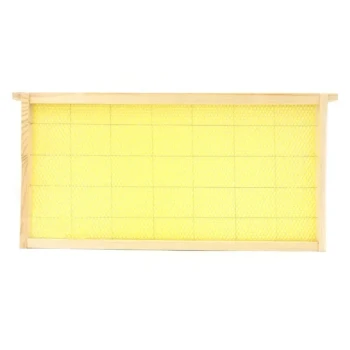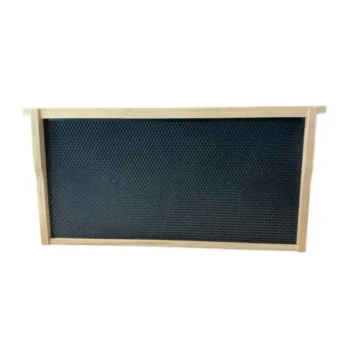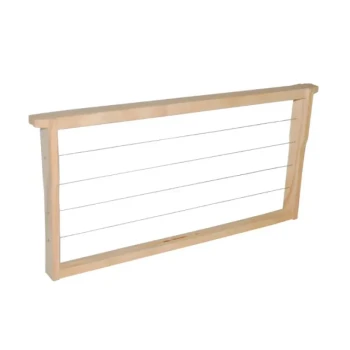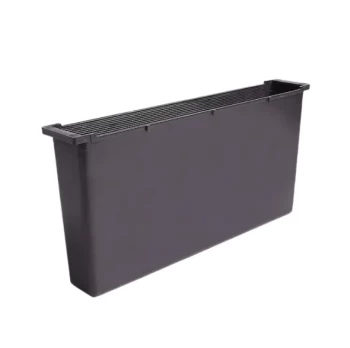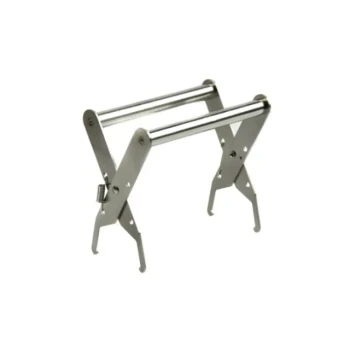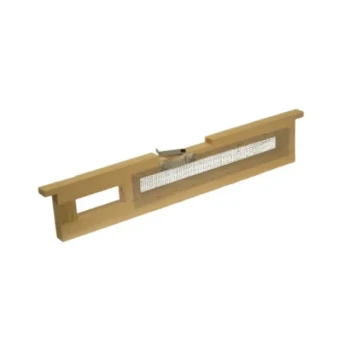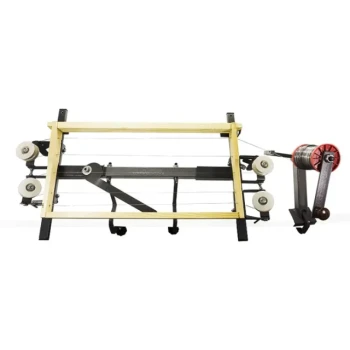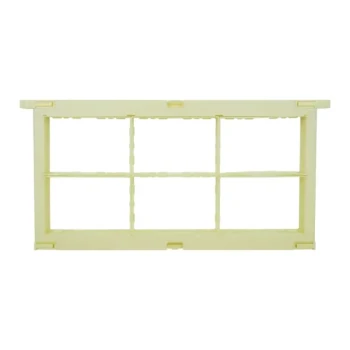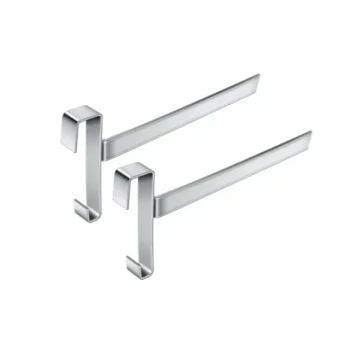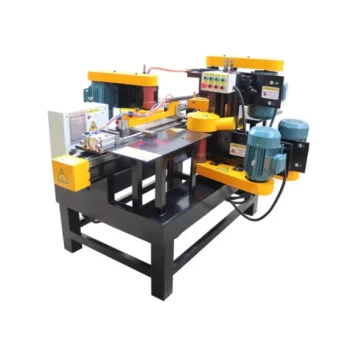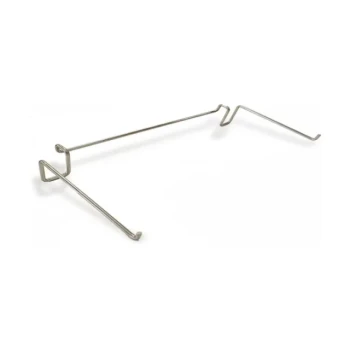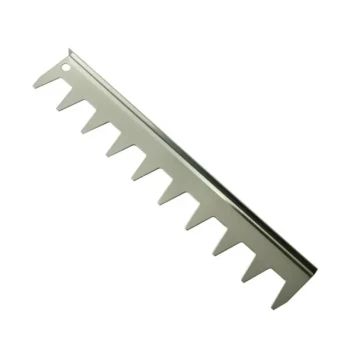On average, the amount of honey in a single frame depends directly on its size. A standard "deep" frame that is completely full and capped will contain about 6 pounds (2.7 kg) of honey, while a "medium" frame will contain approximately 3.5 pounds (1.6 kg). These figures represent an ideal scenario for a frame entirely dedicated to honey storage.
The question of honey per frame isn't about a single number, but about understanding the key variables. The frame's size is the starting point, but the actual yield is determined by how the bees use that frame—whether for honey, brood, or a mix of both.
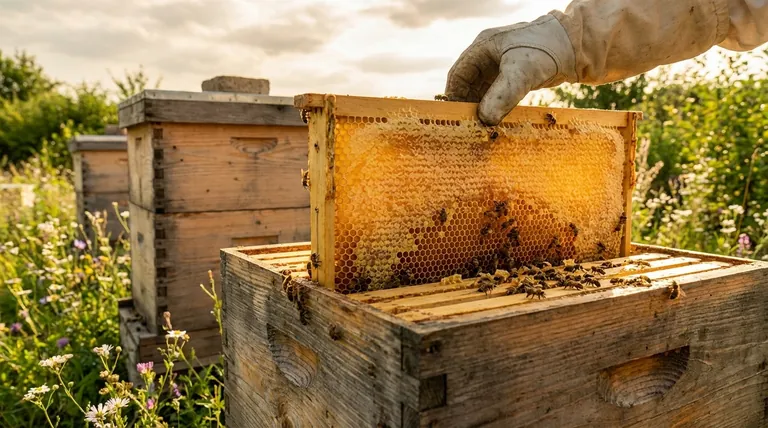
The Primary Factor: Frame Size
A beehive is modular, built from boxes containing frames. The size of these frames is the most significant factor in determining how much honey they can hold.
Deep Frames (9 1/8 inches)
These are the largest standard frames. While they are most often used in the lower boxes of the hive for the queen to lay eggs (the brood nest), some beekeepers use them for honey collection as well.
A deep frame fully drawn out and filled with capped honey holds approximately 6 pounds.
Medium Frames (6 1/4 inches)
This is the most common size used for honey collection in the upper boxes, known as "honey supers." Their smaller size makes them significantly lighter and easier to lift when full.
A medium frame fully filled with capped honey holds about 3.5 pounds. For most hobbyist beekeepers, this is the most relevant number.
Shallow Frames (5 3/8 inches)
Less common today but still in use, shallow frames are even lighter than mediums. They are often preferred for producing "comb honey," where the entire wax comb is consumed.
A shallow frame will hold slightly less than a medium, typically around 2.5 to 3 pounds of honey.
Why Your Actual Yield Will Vary
The numbers above are for perfect, fully capped frames of honey. In practice, the amount you get from any single frame will fluctuate for several important reasons.
"Capped" vs. "Uncapped" Honey
Honey is not ready for harvest until the bees have reduced its water content to around 18% and sealed the wax cell with a cap. A frame may only be partially capped, meaning the rest is "uncapped" or "green" honey that isn't ready. This uncapped honey has a higher water content and weighs less.
The Brood Nest's Impact
Frames in the brood boxes are rarely, if ever, 100% honey. The queen lays eggs in the central part of these frames, and the bees store pollen ("bee bread") alongside the developing brood.
You will only find frames completely full of honey in the honey supers, which are placed above the brood boxes and separated by a queen excluder.
Comb and Foundation Type
The way bees build the wax comb can also play a role. If the bees draw out the cells deeper, the frame can hold slightly more honey. The type of foundation used (plastic vs. wax) can also influence the final structure and capacity.
Understanding the Trade-offs
Choosing a frame size for honey collection is a classic balance between efficiency and ergonomics.
Deep Frames: Higher Yield, Heavier Lifting
Using deep frames for honey supers is efficient, as you need fewer frames to hold the same amount of honey. However, a full box of 10 deep frames can weigh 80-90 pounds, making it extremely difficult to lift.
Medium Frames: The Balanced Approach
Medium frames offer a compromise. A full "medium super" weighs a much more manageable 40-50 pounds. This is why they are the standard for honey production, especially for hobbyists and beekeepers working alone.
Ignoring Small Patches: A Practical Guideline
When estimating your harvest, it's practical to focus on frames that are at least 80% capped with honey. Trying to extract small, isolated patches of honey from frames that primarily contain brood is inefficient and risks damaging the delicate larvae in the process.
Estimating Your Honey Harvest
To apply this information, consider your specific goals and equipment.
- If your primary focus is estimating a potential harvest: Assume a full medium super (10 frames) will yield about 35 pounds and a deep super will yield about 60 pounds.
- If your primary focus is ease of handling: Standardize on medium frames for all your honey supers. This is the most common and recommended practice.
- If you are simply evaluating a single frame from your hive: Look at how much of it is capped honey. A medium frame that is half-capped will provide a little less than 2 pounds of honey.
Understanding these variables empowers you to accurately assess your hive's health and production beyond a simple, single number.
Summary Table:
| Frame Size | Approx. Honey Yield (Fully Capped) | Common Use |
|---|---|---|
| Deep (9 1/8") | 6 lbs (2.7 kg) | Brood chamber, sometimes honey |
| Medium (6 1/4") | 3.5 lbs (1.6 kg) | Standard for honey supers |
| Shallow (5 3/8") | 2.5-3 lbs (1.1-1.4 kg) | Comb honey production |
Maximize Your Apiary's Efficiency with the Right Equipment
As a commercial apiary or beekeeping equipment distributor, precise honey yield starts with reliable, high-capacity frames and supers. HONESTBEE supplies the durable beekeeping supplies and equipment you need to optimize honey production and streamline your operations.
Let us help you standardize your setup for maximum yield and easier handling. Contact our wholesale team today to discuss your specific needs and volume pricing.
Visual Guide
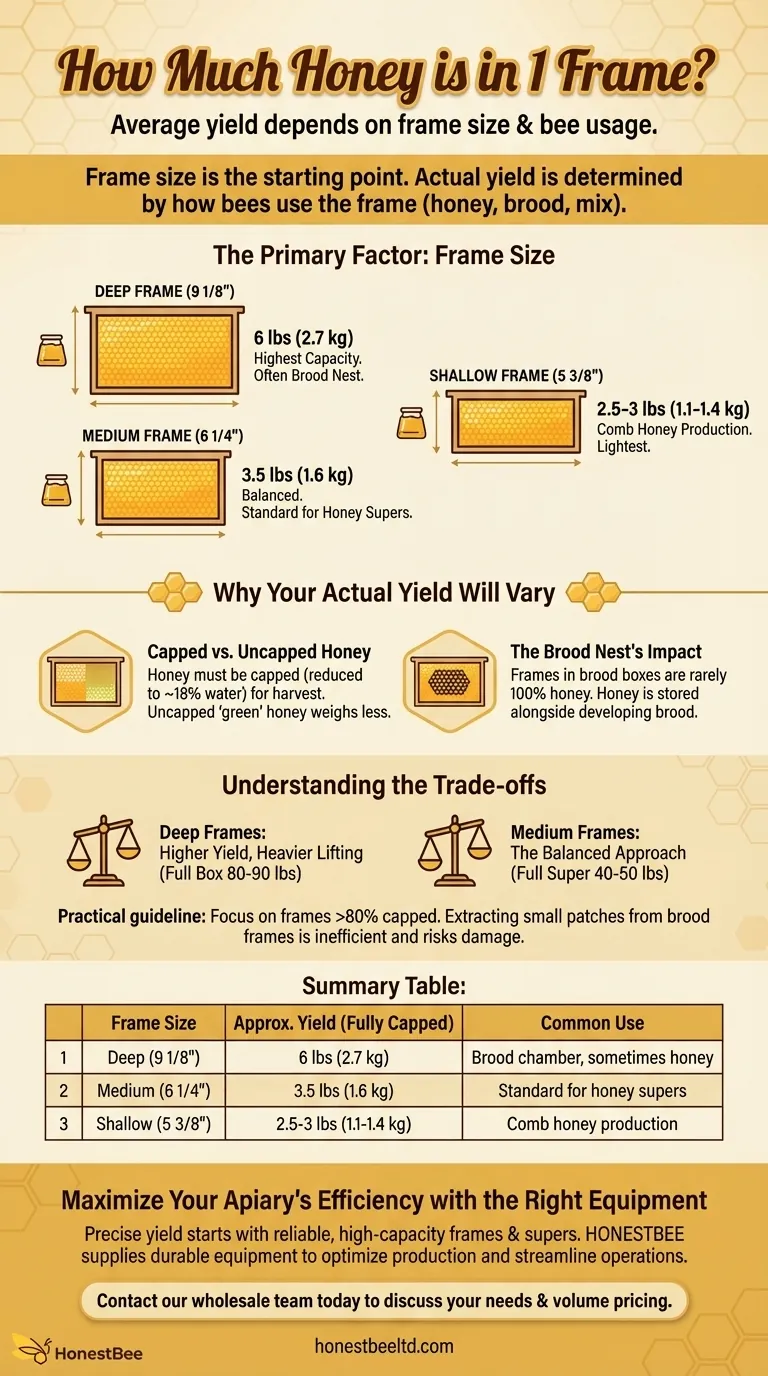
Related Products
- Plastic Bee Frame Beekeeping Hive Frames for Wholesale
- 3.5L Plastic Beehive Frame Feeder Deep Frame Water Feeder for In Hive Use
- Assembled Wooden Bee Frames with Beeswax Foundation Ready to Use by HONESTBEE
- Assembled Wooden Bee Frames with Plastic Foundation for Durability and Convenience by HONESTBEE
- Heart-Shaped Comb Honey Frame and Honeycomb Cassette
People Also Ask
- What are the advantages of plastic frames for beehives? Boost Apiary Efficiency & Durability
- Can you boil plastic bee frames? Avoid This Costly Mistake and Protect Your Hive
- Are plastic bee hive frames good? A Guide to Modern Durability vs. Natural Appeal
- Are plastic frames good? Boost Apiary Efficiency with Durable, Pest-Resistant Frames
- What are the differences between wooden and plastic frames in beehives? Choose the Best for Your Apiary


